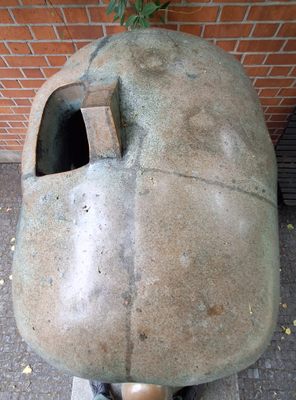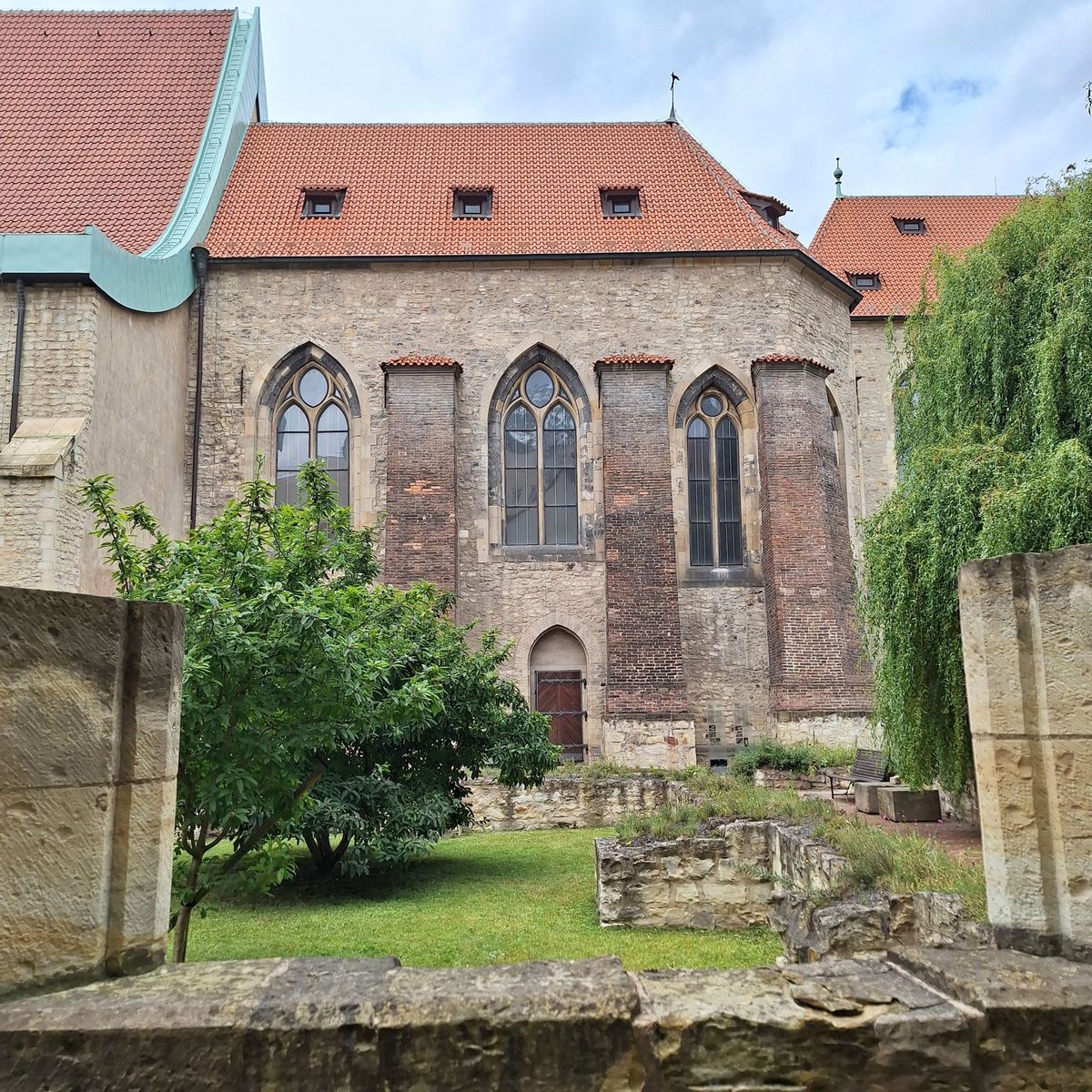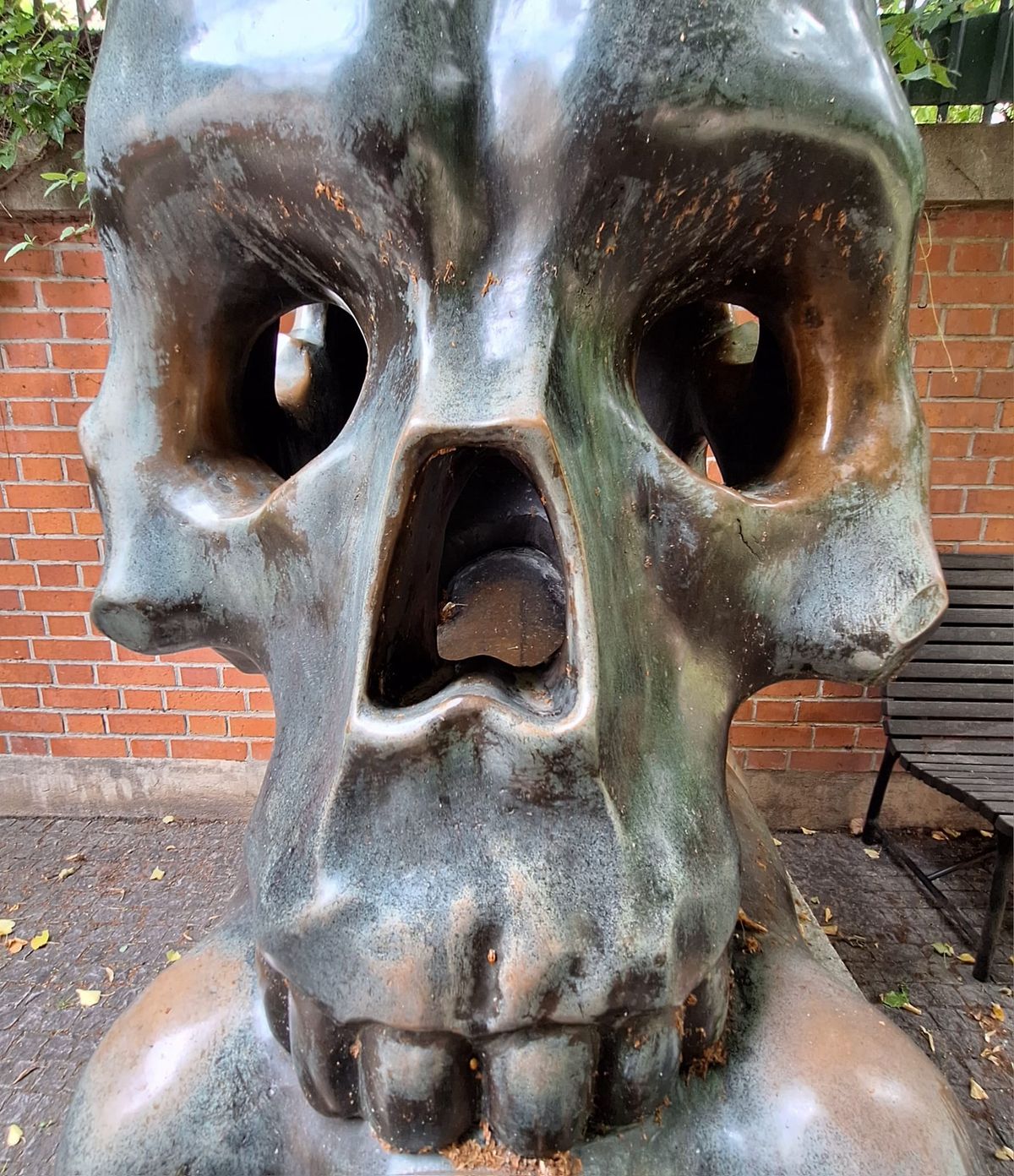About
Most tourists roaming the 750,000 square foot Prague Castle, which Guinness recognizes as the largest ancient castle in the world, are probably surprised to be confronted with an existential riddle in the form of a giant-skull bearing beggar on all fours.
Jaroslav Róna, who also created the Franz Kafka statue nearby, is a rather prolific surrealist sculptor. In the 1980s he helped found the Czech art group Tvrdohlaví (The Stubborn). He built Podobenství s Lebkou, aka "Parable with Skull" in 1993, a bronze sculpture of a beggar weighed down by a large skull resides on a thick slab of aging wood.
The sculpture used to be found at the eastern end of the Golden Lane by Prague Castle’s Daliborka Tower, where Dalibor of Kozojedy, known as the Robin Hood of Czechia, was said to have played the violin while waiting out his days.
Parable with Skull is based on one of Kafka’s characters—the “beggar, who, with the death rattle already in his throat, insists on dying on the doorstep” from The Bucket Rider. The sculpture tends to intrigue and even confuse those who visit the castle without prior knowledge of Róna’s surrealist works. There’s also a surprise at the rear end of the statue: the beggar’s dangling bronze testicles are displayed quite prominently, often shocking admirers of the piece.
Prague is a city known for its strange public sculptures, and Róna’s are among the strangest, but Parable with Skull isn’t a public work. To see the strange crawling man, one must pay admission to tour Prague Castle.
Related Tags
Know Before You Go
As the location has changed, it is best to Google "Parabola con Teschio." It resides in the northern quadrant of the Convent of St. Agnes, in front of a red brick wall. The surrounding gardens are open 24 hours and free to visit.
Published
September 5, 2017





























































